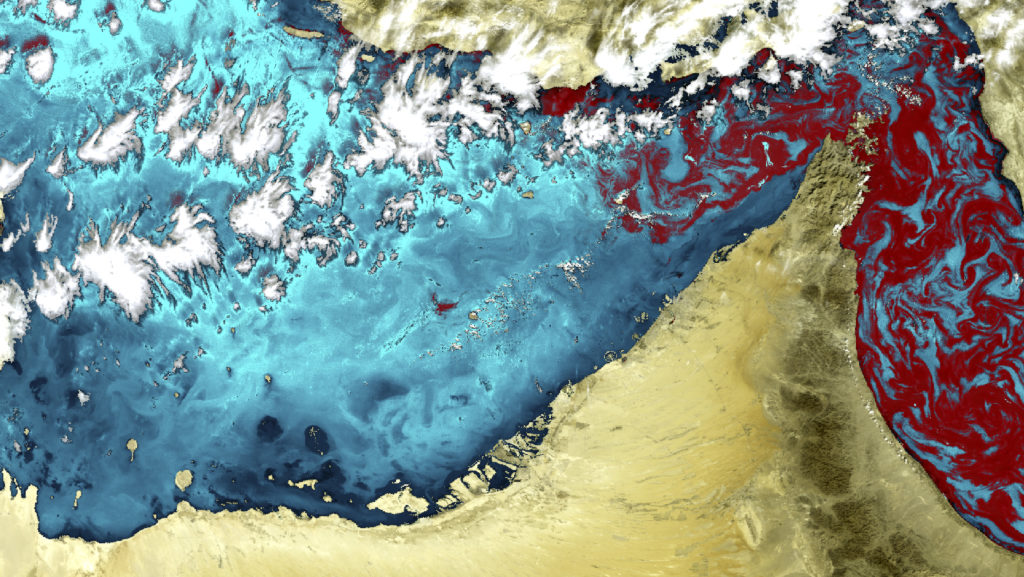A red tide usually occurs along the coast of the United Arab Emirates (UAE) twice a year due to seasonal change in water temperature. Usually a harmless natural phenomena, they are growing out of control and could cause serious damage to both humans and the environment.
—
The first serious red tide event happened in the UAE regional water back in early September 2008, spreading along most of the country’s coasts. Then, it appeared again in February 2009 flushing the sea with red and killing fish indirectly because of oxygen depletion.

A dinoflagellate bloom, known as a “red tide” off the coast of the United Arab emirates in 2008. Acquired with Envisat’s MERIS instrument.
Red tides, a type of algae bloom, happen when a species of algae called dinoflagellates proliferate rapidly and saturate an area. These outbreaks are fuelled by increased water temperatures and excessive nutrient runoff, usually from chemical fertilizers or industrial activity. In small quantities, dinoflagellates are harmless. However, large algae blooms lead to higher concentrations of biotoxins that can kill fish, and poison humans. Shellfish are natural water filters, meaning they will stock up the poisonous compounds in their environment – if a human eats a contaminated shellfish, he/she can experience mild to severe disease.
Aside from local ecosystems, algae blooms also cause damage to the country’s economy. The coast of the United Arab Emirates hosts some of the largest desalination plants in the world. As the algae clogs filters in the plants, some of these report a 30 – 40% decrease in production. Local fishery and tourism are also affected as habitats may become unfavourable for the local marine life; water becomes unpleasant or even dangerous to swim in.
A few examples of the damage caused.
- The Abu Dhabi Water Resources Master Plan estimated losses of more than US$100,000 (Dh368,000) a day for the water desalination industry
- Serious damage was caused to the UAE’s marine life, damaging fish stocks, coral, and wiping out large populations of fish in Dibba Rock in 2008 and 2009
- In 2018, Saadiyat Beach in Abu Dhabi was closed to swimmers after a harmful algal bloom was found in the sea surrounding the island
This problem doesn’t seem to be going away. In 2017, algal bloom the size of Mexico was spotted in the Arabian Sea and was spreading close to the country’s coast. But with the help of satellite technology, experts can better monitor the events and set up an early warning system. However, effort should also be put in tackling the root problems: climate change on one hand, increasing water temperatures, but more importantly chemical fertilizer use.
This article was written by Wing Ki Leung and Owen Mulhern.
You might also like: Climate Change and Conflict in Africa












![The Statistics of Biodiversity Loss [2020 WWF Report]](https://earth.org/wp-content/uploads/2020/12/lprwinkyTHB-544x306.jpg)





